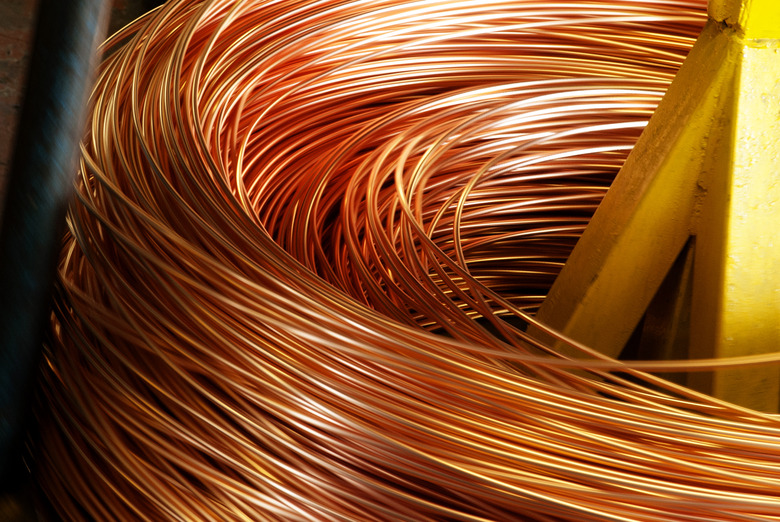Homemade Generator Science Project
Making a homemade generator is an easy project that will work well for many science fairs. Simple direct current (DC) generators have been made over a hundred years from commonly available materials. A homemade generator can be a good base for explaining both magnetic and electrical principles.
Materials
Materials
Because a basic generator is very simple, it can be made from readily available components. For a basic generator, you will need a magnet, some wire and a large nail. A low voltage flashlight bulb can show that the generator is actually producing electricity. Cardboard will make the frame for the generator, and an inexpensive socket for the light bulb will make it easier to hold the bulb against the power feeds from the generator.
Construction
Construction
Make a rectangular support box out of cardboard. The box should be 8 cm high by 8 cm wide by 3.5 cm deep. Poke a hole through the box on the narrow axis. The hole should be centered on both sides as the nail will become the axle for the magnet. Slide the nail through the box and glue four magnets to the nail. Strong ceramic magnets work best. Wrap the wire around the box, allowing the nail to poke through the wire. The wire must be insulated so it doesn't short out. Strip the insulation off the ends of the wire and connect it to the light bulb or bulb socket and spin the nail with the magnets attached. The bulb should glow faintly. In some cases, you may need to turn off the lights to see the faint glow. To make the bulb brighter, spin the nail faster. If you'd like to spin the magnets faster, put the end of the nail in an electric drill. Be careful not to spin the generator too quickly or it could come apart.
How it Works
How it Works
The wire contains the potential for electricity. The magnetic fields surrounding the magnets change the polarity of the atoms in the metal, thus causing electrons to be released. The faster the magnets spin in the metal coil, the more electrons are released and the higher the voltage created by the generator. More coils of wire will create more voltage. If your generator isn't producing electricity, try more coils of wire and ensure that the wire isn't broken or shorting out because of poor insulation.
For a more detailed explanation, watch the video below:
Other Ideas and Tips
Other Ideas and Tips
If you want to make a generator that will work well with a drill, consider using Plexiglas for the generator box. It will be physically stronger and will show the spinning magnets better. For more advanced science projects, the nail can be replaced with an axle that connects to fan blades to make a wind generator.
Making a Generator from an Electric Motor
Making a Generator from an Electric Motor
An old electric motor may be usable as a generator. An electric motor consists of coils of wire around a spinning magnet. In an electric motor, electricity is passed through the coils, which causes the magnets to spin. The spinning magnets and the axle provided power to whatever device used the motor. If you take the motor out of the device and spin the axle, it becomes a generator. If you prefer not to make your own generator mechanism, some interesting wind power experiments could be made using fan blades and an electric motor.
Cite This Article
MLA
Jie, Ma Wen. "Homemade Generator Science Project" sciencing.com, https://www.sciencing.com/homemade-generator-science-project-5340352/. 12 November 2018.
APA
Jie, Ma Wen. (2018, November 12). Homemade Generator Science Project. sciencing.com. Retrieved from https://www.sciencing.com/homemade-generator-science-project-5340352/
Chicago
Jie, Ma Wen. Homemade Generator Science Project last modified August 30, 2022. https://www.sciencing.com/homemade-generator-science-project-5340352/
